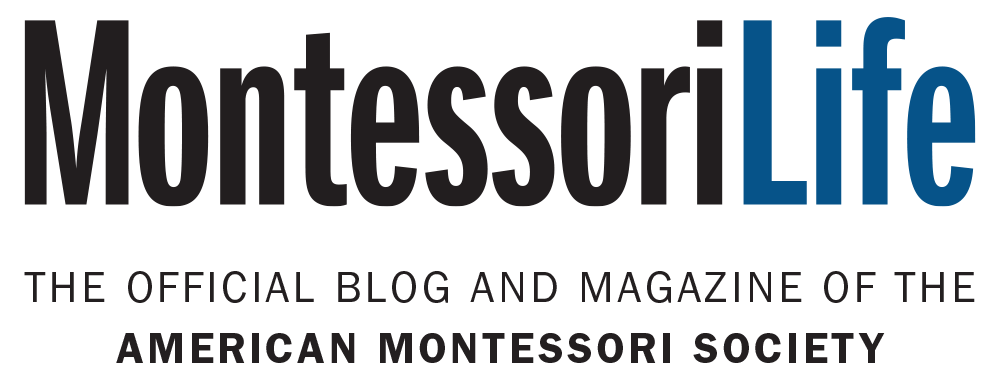Beyond Three-Part Cards: Winter Botany Lessons on the Poinsettia

In part one of Beyond Three-Part Cards: Winter Botany Lessons, we addressed the potential drawbacks of overusing the botany nomenclature cards for plant studies. Specifically, we noted that going through the three-part cards systematically can become monotonous and cumbersome for both teachers and children. We suggested that the cards be used to review and reinforce newly introduced concepts and vocabulary, with live specimens used as the focal point of most botany lessons. We offered alternative approaches to botany studies, such as creating lessons around themes, a plant-of-the-month, or visiting plants (Spears, 2010) to add variety, interest, and a break from the three-part cards.
For December, there may be perhaps no more suitable plant-of-the-month than the poinsettia (Euphorbia pulcherrima). Ubiquitous this time of year, and much admired for its decorative and festive contribution to the season, the poinsettia may be overlooked in terms of the lessons it provides not only in botany, but in history, geography, research, vocabulary, writing, ecology, and environmental stewardship. Just as with conifers, teachers will find enough lessons centered around the poinsettia to last a month or longer.
Botany Lessons
The first feature most people notice about the poinsettia is its beautiful bright red “flower” (although cultivars are available in pink, orange, yellow, cream, speckled, and variegated colors). This colorful feature of the poinsettia is not a flower at all, however, but a group of bracts—modified leaves that attract pollinators. The poinsettia’s unassuming flowers are grouped within the small yellow structures (cyathia) at the center of the bracts.
Students can use the First Knowledge of Plants research questions and other resources to explore the poinsettia’s:
- form (shrub or small tree)
- leaf type (broad, flat, ovate shape, entire or sparsely toothed margin)
- duration/life cycle (perennial)
- climate zone and biome (tropical/tropical dry forest)
- range and habitat (North and Central America, from southwestern states and Mexico to southern Guatemala)
- status as native; naturalized; invasive; horticultural; or agricultural (native in some regions, horticultural in others)
Advanced students might be interested in finding answers to more open-ended questions:
- What are the poinsettia’s adaptations?
- What are some characteristics of genus Euphorbia?
- What are some of the poinsettia’s closest relatives?
- What is the poinsettia’s ecosystem and biological community?
Other notable facts to introduce in botany lessons:
- Poinsettias are short-day photoperiodic plants, meaning they require abundant light during the day, but 14 hours of uninterrupted darkness for six-to-eight weeks in order to flower and develop colored bracts. (This article describes the challenges of rising temperatures for poinsettias and how researchers are manipulating daylight hours to help save them; this children’s book depicts the entire growing process with photos and simple text.)
- Contrary to popular belief, poinsettias are not poisonous. While their milky sap can cause skin or eye irritation on contact, and nausea, vomiting, or diarrhea if ingested, it is not deadly to people or pets.
- Poinsettias are monoecious plants, having male and female flowers in separate structures on the same plant. Help students locate and identify the male flowers (which will emerge first bearing grains of pollen) and female flowers (which resemble a thin red hair and will emerge when the male flowers shrivel). This photo shows the distinct differences.
- Poinsettias grow wild along roadsides in some tropical areas, and some varieties are considered weeds.
There is material aplenty to cover a variety of lessons in botany alone, and cross-curricular connections extend the poinsettia’s range as a lesson focal point. In addition to botany and language lessons involving reading, research, writing, and vocabulary, the poinsettia provides valuable lessons for history, geography, ecology, and environmental studies.
Montessori noted that the Upper Elementary years are when we see children’s developing ethics coincide with their emerging global perspective, and they are not too young to participate in discussions about the problematic aspects of a seemingly innocuous item like a poinsettia plant.
History and Geography Lessons
The U.S. House of Representatives designated December 12 as National Poinsettia Day in 2002, but too often, we simply purchase the poinsettia as a holiday décor item, giving little or no thought to its history—its cultural symbolism and importance:
In fact, how the poinsettia came to the U.S. is an ironic tale of long-ago foreign policy blunders in Mexico. In addition to being a beloved holiday plant, the poinsettia is a reminder of how easy it is for us to appropriate the parts we love of various cultures while not always appreciating the bigger picture or valuing the people from that very culture.
Historically, poinsettias have played a significant role in Mexican indigenous cultures, and yet, in the United States at least, the plant has been largely stripped of its Mexican identity. To gain understanding in this area, students can research:
- the historical role of the cuetlaxochitl (poinsettia) in Aztec culture
- indigenous and other cultural names for the poinsettia and the significance of these names
- Christian colonization and mythological origins of the poinsettia’s association with Christmas
- Joel Roberts Poinsett, the poinsettia’s American namesake: his background in U.S. politics, including the part he played in American Indian displacement and intrusiveness in Mexican foreign policy, and his role in introducing the poinsettia to the U.S.
Ecology and Environmental Stewardship
The cultivated poinsettia descends from wild poinsettia populations in areas of Central America, which are currently in decline due to unregulated deforestation in this region. Other ecological consequences are directly related to world-wide shipping and sales. In the United States alone, 70 million poinsettia plants are sold annually over a six-week period, making it the highest-selling potted plant nationwide, with sales contributing more than $250 million to the U.S. economy. The ecological impact of these sales results from the following:
- The cultivation and shipping of poinsettia plants is resource intensive.
- Most poinsettia plants sold in the U.S. are in plastic pots and wrapped with plastic or foil.
- Poinsettia plants are enjoyed for six weeks or so, then most end up in landfills where, as they decompose, they release carbon dioxide (CO2) and methane, both of which are climate-warming greenhouse gasses (not to mention the plastic pots and wrappers).
Bringing attention to the topic of waste associated with poinsettia sales is developmentally in line with the Elementary-age child’s emerging moral thinking, and Upper Elementary students, especially, can and should participate in discussions about the ecological consequences of common practices like buying a temporary potted plant. Such exercises yield important lessons about individual responsibility for environmental stewardship.
A challenging and potentially rewarding activity for the class or individual students is to try getting a poinsettia to bloom for the next holiday season. Short of that, students can encourage their families to compost their poinsettia plants and save the plastic pot for another project.
Interdisciplinary lessons bring together the strands of any theme or topic to create a big-picture lens through which children can recognize and appreciate the interconnections between one area of the curriculum and another. We wrote here that plants are so much more than the sum of the parts of which they are made. Likewise, the poinsettia is much more than a holiday decoration; it is a focal point for valuable lessons across the curriculum.

Other references
Spears, P. (2010). Plant Lessons: introducing children to form and function. Corvallis, OR: Big Picture Science.

Cynthia Brunold Conesa |
Interested in writing a guest post for our blog?
Let us knowThe opinions expressed in Montessori Life are those of the authors and do not necessarily represent the position of AMS.
















